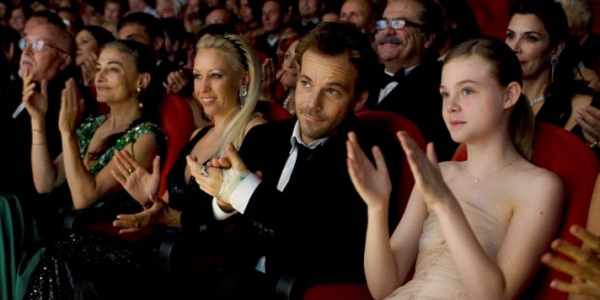Somewhere is the fourth film from Sophia Coppola, after The Virgin Suicides, Lost In Translation and the visually sumptuous but disappointing Marie Antoinette. Like her other films this is a contemplative mood piece, full of sparse dialogue and suffused with a melancholy tone.
Somewhere is the fourth film from Sophia Coppola, after The Virgin Suicides, Lost In Translation and the visually sumptuous but disappointing Marie Antoinette. Like her other films this is a contemplative mood piece, full of sparse dialogue and suffused with a melancholy tone. However her observational approach will not readily connect with more mainstream audiences. But if seen as a companion piece to Lost In Translation then Somewhere certainly contains some pleasures for the discerning audience.
Like that earlier film, Somewhere follows a character who feels trapped but who eventually finds a way to move on with his life. Johnny Marco (played by Stephen Dorff) is a successful A-list actor who has grown disillusioned and jaded with the trappings of fame. He lives in comfort at Hollywood’s infamous Chateau Marmont hotel, famous as the place where John Belushi permanently checked out following a drug overdose. Between films, Marco indulges in a hedonistic life style of empty sex, booze. The opening scene – a five-minute take – sees Marco driving around in circles in his Ferrari, a wonderfully visual metaphor for his life. It is only when he is left to temporarily care for his estranged eleven year old daughter Chloe (Elle Fanning) that he begins to see a way out of his empty existence.
Having grown up watching her father, Oscar winning director Francis Ford Coppola at work on various film sets, Somewhere obviously has a personal resonance for Coppola. Coppola adopts a minimalist style and her film is both enigmatic and understated. Her direction is measured, as she is more interested in the internal journey of her central protagonist.
Rarely seen on screen these days, Dorff gives a wonderfully understated and largely internal performance here. He typifies the dishevelled bad boy actor who has achieved fame far too quickly. And Fanning, the younger sister of the more famous Dakota, proves to have a natural and charming screen presence, and her performance here is less shrill or histrionic than her sister.
Coppola is a classical filmmaker in the style of European filmmakers like Antonioni and Bertolucci, making Somewhere a ponderously paced but beautiful and insightful art house movie. The film has been beautifully shot by veteran cinematographer Harris Savides (Milk, American Gangster ). Coppola likes to keep her camera steady and focussed; none of this moving, handheld camera nor the kinetic rapid editing preferred by most younger film makers.

